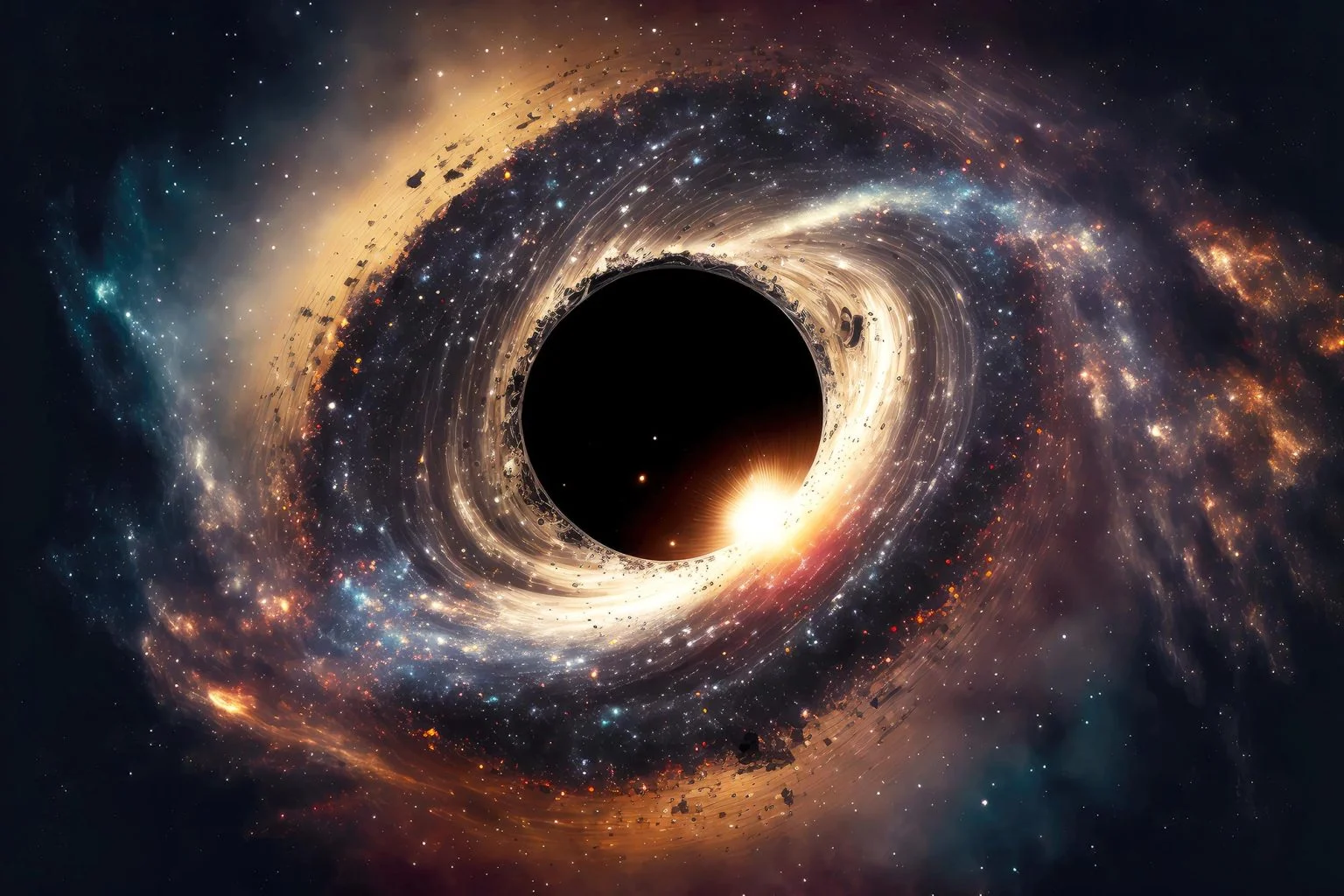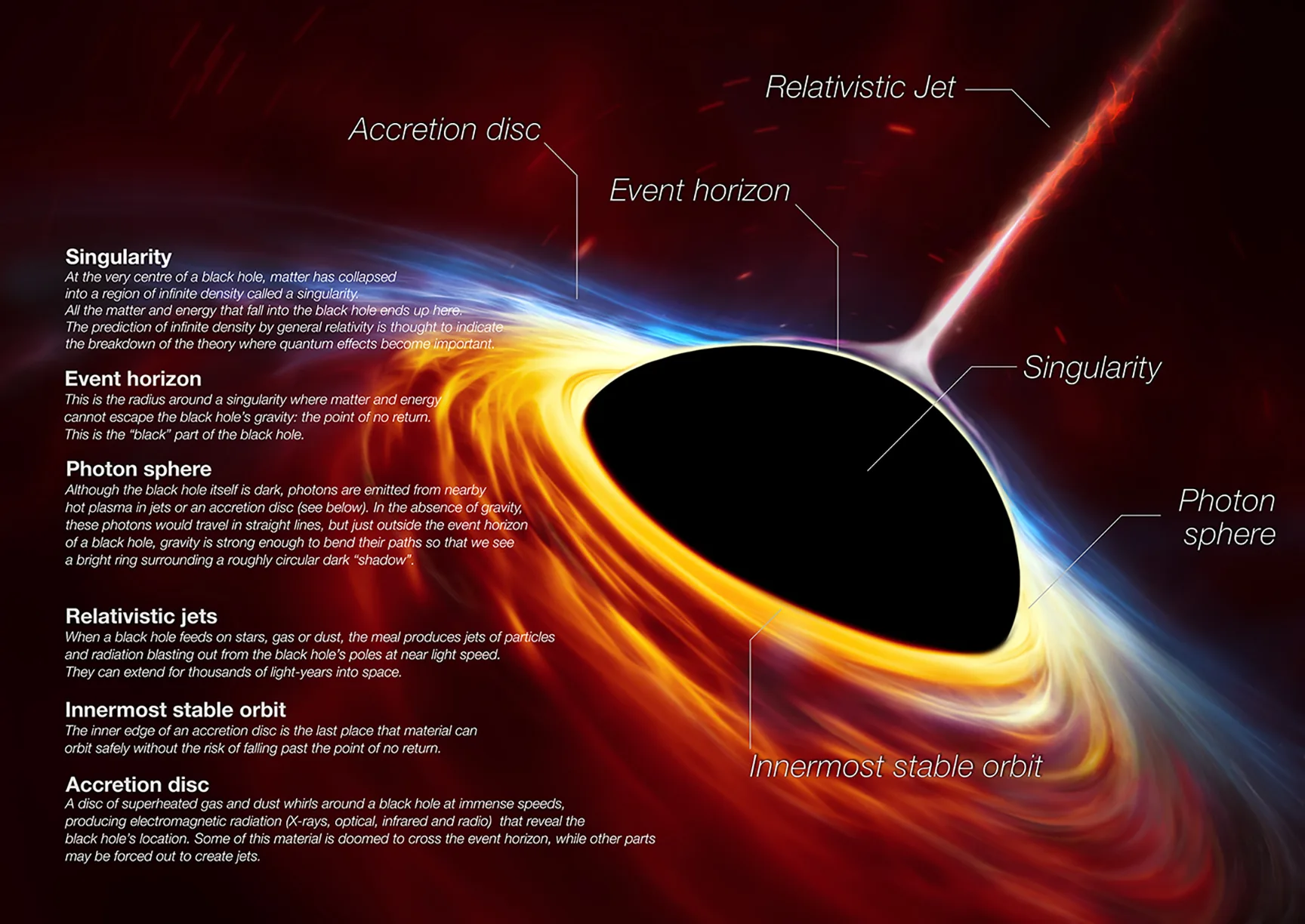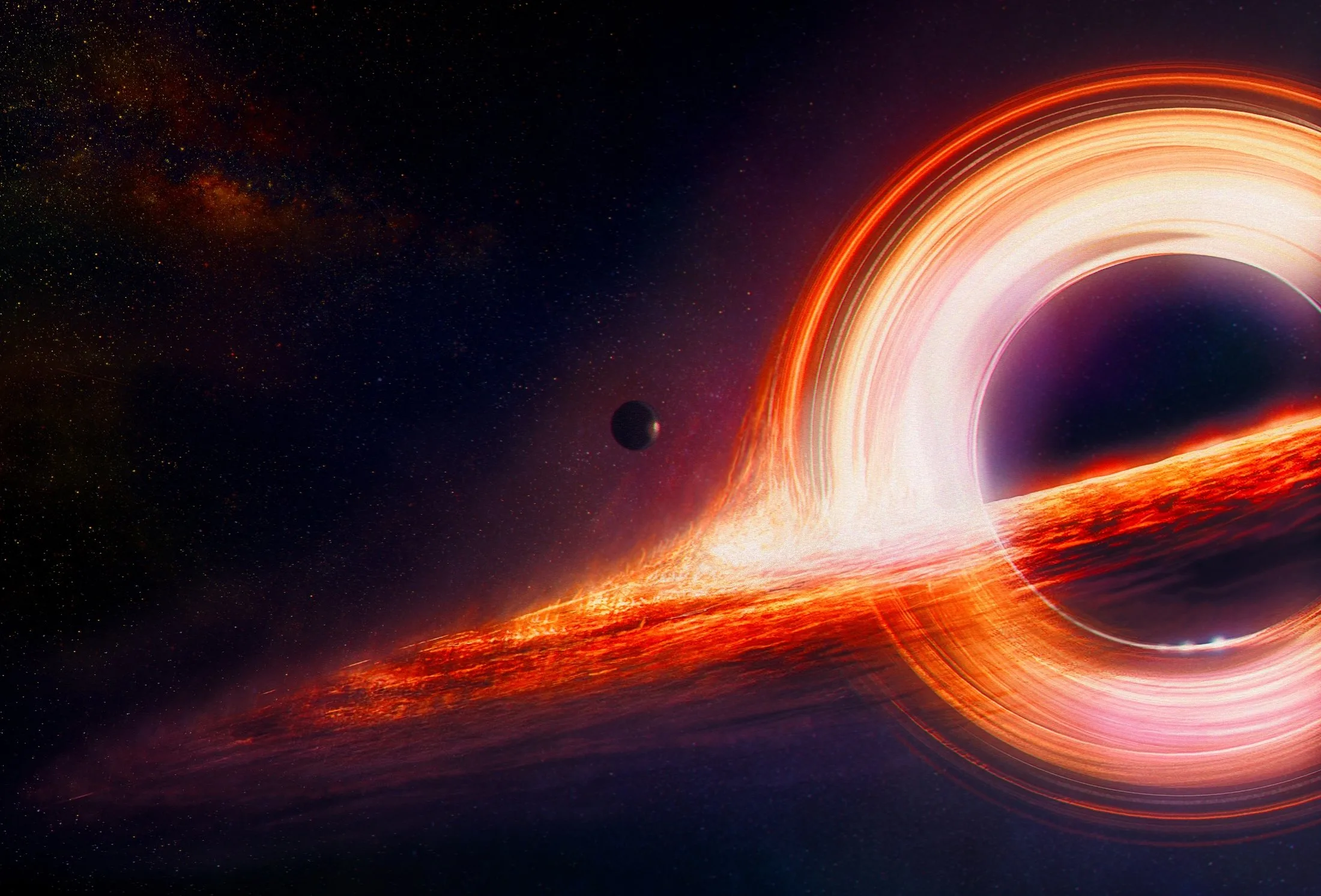Black holes and wormholes are two of the most fascinating and mysterious phenomena in the universe. While black holes are well-studied objects with extreme gravitational forces, wormholes remain largely theoretical—potential gateways to distant parts of the cosmos or even other dimensions. Let’s dive into the science, theories, and mind-blowing implications of these cosmic wonders.

Black Holes: Nature’s Ultimate Abyss
Black holes are regions in space where gravity is so intense that nothing, not even light, can escape once it crosses the event horizon—the boundary surrounding a black hole. They form when massive stars exhaust their nuclear fuel and collapse under their own gravity. The core contracts to a singularity, a point of infinite density, while the outer layers are expelled.
Recent advancements have provided deeper insights into black holes. In 2019, the Event Horizon Telescope collaboration released the first-ever image of a black hole, located in the galaxy M87, confirming theoretical predictions. Additionally, gravitational wave observatories have detected ripples in spacetime caused by black hole mergers, offering further evidence of their existence and properties.
Types of Black Holes
- Stellar Black Holes – Formed by the collapse of massive stars, these range from a few to dozens of times the mass of the Sun.
- Supermassive Black Holes – Found at the centers of galaxies, including the Milky Way, these can be billions of times more massive than the Sun.
- Intermediate Black Holes – A relatively new discovery, these bridge the gap between stellar and supermassive black holes.
- Primordial Black Holes – Hypothetical black holes that may have formed shortly after the Big Bang.
What Happens Inside a Black Hole?

Once something crosses the event horizon, it is inevitably pulled toward the singularity, a point of infinite density. According to Einstein’s General Theory of Relativity, space and time are warped to extreme degrees within a black hole, making it a one-way journey.
Wormholes: Theoretical Shortcuts Through Space-Time
Wormholes are hypothetical tunnels connecting disparate points in spacetime, potentially allowing for shortcuts between distant regions of the universe. While solutions to Einstein’s field equations suggest the possibility of wormholes, they remain theoretical, with no empirical evidence to date.
The concept of traversable wormholes has been popularized in science fiction and explored in scientific literature. However, maintaining a stable, traversable wormhole would require exotic matter with negative energy density, a substance not yet known to exist.
How Would Wormholes Work?
- Traversable Wormholes: Theoretically, a wormhole could allow travel between distant parts of the universe, but it would require exotic matter with negative energy to remain stable.
- Einstein-Rosen Bridges: Proposed in 1935 by Albert Einstein and Nathan Rosen, these bridges theoretically connect black holes but are believed to be too unstable for travel.
- Interdimensional Travel: Some theories suggest that wormholes could lead not only to distant galaxies but to parallel universes or alternate realities.
Could Black Holes Be Wormholes?

Some scientists theorize that certain black holes might actually be wormholes. If this is true, entering a black hole under the right conditions could transport matter elsewhere in the universe rather than crushing it into a singularity. However, no evidence currently supports this idea.
The Role of Black Holes and Wormholes in Science Fiction
From movies like Interstellar to TV shows like Star Trek, black holes and wormholes have captivated the imagination of storytellers. While Hollywood often takes creative liberties, real science is inching closer to understanding these cosmic anomalies.
Interconnection and Ongoing Research

Some theories propose that certain black holes could act as wormholes, connecting different regions of spacetime. Distinguishing between a traditional black hole and a wormhole is a subject of ongoing research. For instance, the observation of orbiting hot spots near the event horizon might offer clues, as the behavior of matter near a wormhole could differ from that near a black hole. arxiv.org
The study of black holes and wormholes not only deepens our understanding of gravity and spacetime but also challenges the boundaries of theoretical physics, pushing us closer to a unified theory that reconciles general relativity and quantum mechanics.
For a more in-depth exploration of these topics, you might find the following video insightful:
Conclusion
Black holes are a proven aspect of our universe, while wormholes remain an exciting possibility. Whether they can be used for travel or contain hidden secrets of the cosmos is still unknown. Future research and technological advancements may one day unlock their true potential, forever changing our understanding of space and time.
Stay tuned for more deep dives into the greatest mysteries of the universe!


